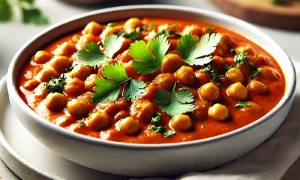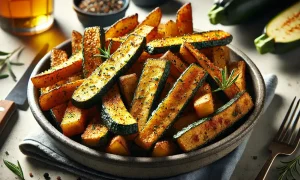How to Plant, Grow, and Harvest Potatoes

Potatoes aren’t your most common home-garden crop. However, they’re extremely easy to grow and can provide a great yield to enjoy throughout the off-season.
The key is learning how to plant potatoes, understanding how they grow, and knowing how to harvest and store them properly.
Selecting Your Seed Potatoes
Potatoes can be grown in several different ways. It’s all a matter of selecting your seed potatoes – the ones you start with that will grow into new plants. The eyes of the potato are what sprouts and grows, eventually forming leaves and plants above ground, while growing into new potatoes below.
When planting potatoes you can either bury them whole with the eyes pointed up, or cut off sections of the potato (which we recommend doing) and again, bury them with the eyes up.
So what do you have to choose? – Where your seed potatoes come from.
Have you ever bought potatoes, only to find them growing in your pantry months down the road? Yep… me too. That’s one way to have a small potato garden. Instead of tossing them out or composting, just bury them! It turns out those little buggers aren’t useless after all. In fact, they’ll give you a whole new plant.
However, there are a few precautions that you need to be aware of when growing potatoes.
Store-bought potatoes are most often treated with pesticides and other chemicals. Growth inhibitors can also be used on grocery store potatoes as a sort of preservative to keep them fresh longer. The obvious problem is that they were treated specifically so they don’t grow – kind of goes against our mission here.
Organically grown potatoes may not have some of these chemicals, but there is also the risk of disease. Any disease that was found in the potato from which your crop has propagated, will pass it down to your crops.
There are potatoes sold specifically for growing. You can choose to buy certified seed potatoes.
Taking this route will help reduce the risk of disease or chemicals. However, it’s totally up to you to choose which potatoes you will use in your garden.
How to Plant Potatoes
When planting potatoes, we’ve found it easiest to use large boxes. Alternatively, you can dig out an area and fill it with fresh soil. If you have harder soil or clay and try to plant your potatoes, it can make growth challenging and become a real pain come harvest time.
Once you have your seed potatoes cut into chunks and ready to go, you’ll want to dig trenches for them to be planted in. Ideally, you want these at least 6 inches deep and 2 feet apart from each other if you have multiple rows. Leave at least 12 inches or so between each plant.
Potatoes are also very hardy, so you can be pretty flexible regarding when to plant them. I typically like to plant in the late Spring. But you can start earlier in the year or even plant in the fall and enjoy a nice harvest.
Can I Check on My Potatoes Before Harvesting Them?
You plant your potatoes, hill the plants, and continuously care for them. But planting root vegetables and tubers is a bit different, because you can’t easily see your progress in the same way! Of course you start wondering what’s going on beneath the surface of the soil! When can you start enjoying your harvest?
It’s tough to resist sticking your hands into the dirt to make sure there are actually potatoes growing. In my experience, there’s no reason you can’t carefully check on them, as long as it’s not too often. Just be cautious not to shake things up too much, but you’ll feel anywhere from grape-sized potatoes up to fist-sized ones.
Your Plants are Talking, Learn How to Listen
The question is, when is the perfect time to harvest potatoes from your garden? The answer is picking up on the changes that the plants go through throughout the growing process.
When the potato plants are still lush and green, keep watering and weeding to ensure the plants stay healthy and dedicate their energy to producing your potatoes. Keep caring for them the same way while they’re flowering.
You can harvest some potatoes before the full crop is done growing. A few weeks after the flowers on the plants start to die off, you can gently loosen the surrounding soil with your hands and feel for small, thin-skinned potatoes. These new potatoes can be harvested without damaging the other potatoes that are still growing from the same plant.These young potatoes are super tender and have a sweet flavor. Delicious!
Potato plants gradually start to die when the potatoes are done growing. When you see the plants starting to die back, it’s a good time to harvest a few potatoes at a time. There’s nothing quite like having them for dinner that same day!
How to Harvest Potatoes
The easiest way to harvest a few potatoes at a time is to use your hands and dig right in. You’ll notice that they are usually all located at around the same depth in the ground. Gently pull the potatoes out of the ground, and they will easily separate from the root.
When a plant is completely dead, you will know that it’s time to harvest all of the potatoes. This means the plant is no longer giving the tubers energy to grow. In my garden, this has not simultaneously happened to all of my potato plants.
Sometimes, some plants will be completely dead while others are still flowering. Don’t be in a rush – It’s okay to leave the potatoes in the ground after the plant has died back. The skin actually toughens while the potatoes are in the ground, however, remove the potatoes from the ground before the first frost, or they may be damaged.
An entire potato crop can be harvested at once for storage. The best time to harvest is after it hasn’t rained for a few days. A pitch fork is probably the quickest and easiest way to harvest a large amount of potatoes. Just carefully loosen the soil around the plant and lift the hill up with the pitch fork. The plant can be easily lifted right out of the ground.
Storing Potatoes after Harvest
Once the potatoes are harvested, leave them outside for a few hours to dry, and keep them out of direct sunlight. Don’t use water to remove the dirt, or it will take a long time to dry and increase the likelihood of rotting or mold. Instead, brush them off with a rag or soft-bristle vegetable brush.
After this initial drying, the potatoes should be moved to cure for a couple of weeks. Ideally, you want to cure potatoes in a cool, dark room with high humidity and good ventilation. After curing, these potatoes can be stored for months. Potatoes can be stored in wooden crates, mesh bags, or cardboard boxes, as long as there are openings for ventilation.






